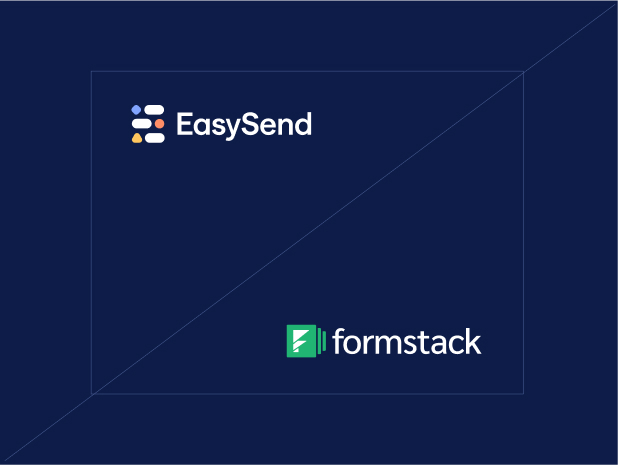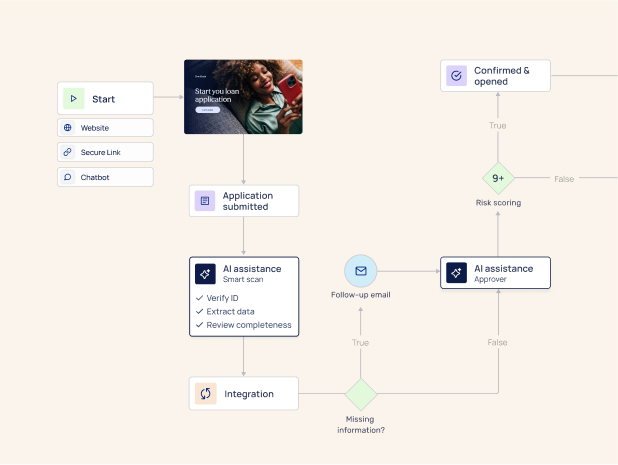Digital processes are transforming the insurance industry and along with it, our language. It sometimes feels like new phrases and terminology are popping up daily!
To help you stay up to date, we’ve put together a list of the most important new buzzwords and definitions that you need to know.
Insurance industry digital transformation buzzwords and terminology
Digital transformation
Digital transformation refers to initiatives and projects that an organization implements to transform its processes and practices from traditional, manual ones into digital-first methods. Digital transformation can include a variety of processes and technologies, including digitizing customer data intake, storing and managing documents online, and using digital processes for approving insurance claims.
Digital transformation roadmap
A digital transformation roadmap is a visual representation of an organization’s digital transformation plan. This type of roadmap usually includes the company’s current state, desired end-state, milestones, and KPIs. Taking business needs into account, the document should ideally lay out the steps needed for an enterprise to achieve both its short-term and long terms goals for digital transformation. It’s also important to consider the company’s current advantages and disadvantages in comparison to the competition, with a clear strategy on how to gain a competitive edge.
Creating a digital transformation roadmap is one of the most important steps in the digital transformation process.
Digital customer journey
A digital customer journey is a series of digital interactions that guide a user through stages of contact with your company, including (but not limited to) data collection, proposals and quotes, signing contracts, and submitting claims to renewing policies. Essentially, a digital customer journey should cover every interaction and touchpoint a customer has with the company. Ideally, digital customer journeys should be personalized to each customer, taking into account their specific needs.
Today, optimized digital customer journeys are an important competitive advantage differentiating modern, customer-friendly insurance companies.
No-code/low-code development
No-code or low-code development are tools that allow companies to create digital initiatives (such as digital customer journeys) without requiring programmers to write code. Anybody with basic digital skills can use drag-and-drop tools to create new apps and quickly deploy new features. The benefits of no-code development include lower costs, easier maintenance, faster time-to-market, and increased innovation.
Digital FNOL
Digital FNOL, or digital first-notice-of-loss, is the digital process of notifying an organization's insurance company when a loss has occurred. The digital FNOL process begins with the detection of a loss, moves forward to preliminary and then detailed assessment, and ends with the submission of an insurance claim.
When implemented successfully, digital FNOL has many benefits, including increased accuracy, a faster process, higher efficiency, digital record-keeping, and improved customer experience.
Input management
Input management is the process of receiving and storing data, as well as validation and error checking. It can be either manual (entered by a person with keyboards and scanners) or automatic (generated by devices such as sensors or barcode readers.)
Input management is an important part of processing claims and underwriting policies, with insurance companies using data from a variety of sources. These sources can include medical records, credit reports, and driving records. To make the best decisions regarding coverage and rates, data must be accurate and up-to-date.
Digital data collection
Digital data collection is the use of digital tools and processes such as mobile apps, social media, and websites for collecting customer data. Data intake requires significant resources from both insurance companies and their customers, and digitizing this process has significant benefits, including faster onboarding, reduced need for customer support, more flexibility, reduced human error, and the ability to identify optimization opportunities with valuable insights. It also frees up employees from tedious data collection, allowing them to innovate more and focus on more interesting, challenging tasks.
eSignature
Electronic signatures, also called eSignatures, are a technology-driven, legally valid equivalent of a handwritten signature used on digital documents. Instead of having to sign paper documents, customers can electronically sign documents online - easy, fast, and hassle-free. They’re also far better for the environment.
That said, eSignatures must meet certain legal requirements to be legally valid, including containing an indication of intent by the signer. eSignatures can be used on anything with a digital representation, including PDFs and digital customer journeys.
eContract
eContracts are contracts made and executed electronically. They have several benefits, including improved efficiency and convenience, higher security, better environmental impact, and ease of sharing and access.
Predictive analytics
Predictive analytics is the practice of making predictions about future outcomes using historical data combined with statistical modeling. In insurance, predictive analytics can be used for pricing and risk selection, identifying customers at risk of cancellation, identifying risk of fraud, triaging claims, and anticipating trends.
Artificial intelligence
Artificial intelligence is the simulation of human intelligence processes by machines like computers. It is already widely used in applications such as voice-activated AI assistants like Siri and Alexa. In the insurance industry, artificial intelligence can be used for leveraging data about a customer’s behavior and habits to create personalized customer experiences, as well as automating customer-facing underwriting and claims processes.

Machine learning
Machine learning is a type of artificial intelligence that gives machines the ability to automatically learn from data and past experiences to make predictions and identify patterns without human intervention. It is used for things like predicting traffic and filtering spam on email. In insurance, machine learning can be used to automate claims, policy administration, and risk assessment.
AI builder
AI builders are digital tools powered by machine learning. In the insurance industry, AI builders are used to build, optimize, test, and deploy digital experience applications (such as digital journeys), without any coding or programming experience required! For example, one application of AI builders is to automatically convert PDF forms into digital customer journeys.
Internet of Things
The internet of things (IoT) is the connection of everyday objects with computers that allows them to send and receive data. Popular IoT devices include home alarms, fitness trackers, and thermostats. Insurance companies can leverage data from IoT devices to better determine rates, mitigate risks, and prevent losses.
Telematics
Telematics technology is used to send, receive, and store information with telecommunication devices to control remote objects. Cars can be equipped with telematics devices that measure data on speed, location, accidents, and more. Insurance companies can use this data along with analytics software to determine policy premiums.
InsurTech
InsurTech refers to the technological innovations created and implemented to improve the efficiency of the insurance industry. It’s a $3.85 billion industry that leverages the latest insurance technologies to reduce costs and improve the customer experience.
Chatbots
Chatbots are software that simulates human-like conversations with users via chat. One of their most popular applications is customer service, with 95% of all customer interactions expected to be powered by chatbots by 2025. Insurance companies can use chatbots to provide 24/7 customer support, saving human customer service representatives for more complex interactions.
Stay updated with the latest insurance industry updates and digital transformation trends
One thing that you can be certain of about the insurance industry is that it will always continue to change and evolve. To stay up to date with all of the latest developments, it’s critical to maintain a clear understanding of the latest technology used in the field and the terminology required to talk about it. We hope that this glossary helped improve your understanding of the most important buzzwords you need to move forward with your digital transformation journey.
We've gathered everything we know about digital transformation to help you along your journey. Visit our Digital Transformation Wiki where you'll find common terms, buzzwords, phrases, and feature definitions.





